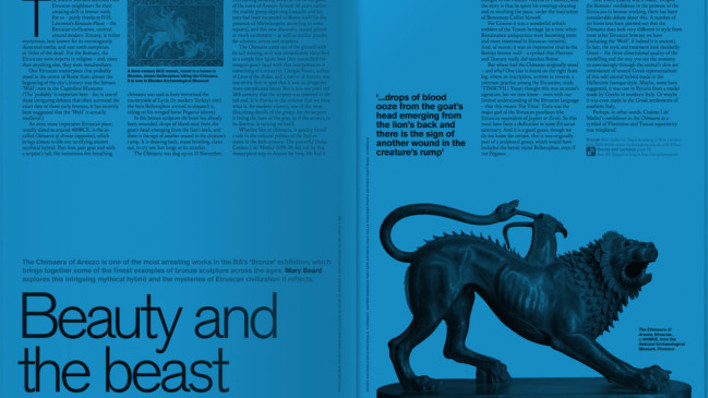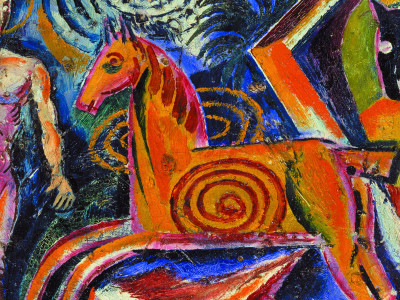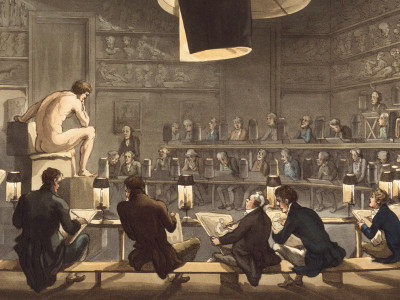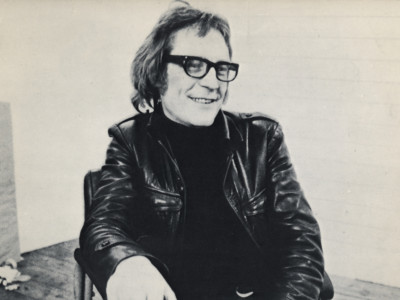
Wilkie Collins, Whistler and the Victorian craze for women in white
By Lara Feigel
Published on 8 April 2022
We've filled our galleries with Whistler, Klimt, and Rossetti's paintings of women wearing white gowns, but what started this trend in the 1860s? Professor Lara Feigel explores the literary origins of this aesthetic moment.
From the Spring 2022 issue of RA Magazine, issued quarterly to Friends of the RA.
Lara Feigel is a Professor of Modern Literature and Culture at King’s College London. Her books include Free Woman: Life, Liberation and Doris Lessing (Bloomsbury).
When James McNeill Whistler’s life-size portrait of his lover Joanna Hiffernan was advertised to Londoners as an “Extraordinary Picture the WOMAN IN WHITE” in 1862, it entered a world already thronging with women in white.
The archetype was the titular character of Wilkie Collins’ phenomenally successful novel of 1859–60. She first appears to the narrator as an “extraordinary apparition”, “dressed from head to foot in white garments”, who seems “as if it had that moment sprung out of the earth or dropped from heaven”. This is Anne Catherick, a fugitive from a mental asylum who knows a secret about the husband of the woman the narrator will soon fall in love with. And she captured the public imagination enough to spawn embodied counterparts in stage adaptations (painter Frederick Walker created the poster for an 1871 play).
Whistler’s ethereal red-haired beauty would also have found a receptive audience among consumers of Woman in White perfume and dancers of the Woman in White waltz.
Collins’ novel, serialised in Charles Dickens’ magazine 'All the Year Round', was the first mega success in the new genre of sensation novels.
Collins’ novel, serialised in Charles Dickens’ magazine All the Year Round, was the first mega success in the new genre of sensation novels. These would soon include Mrs Henry Wood’s East Lynne and Mary Braddon’s Lady Audley’s Secret, and arguably encompassed Dickens’ Great Expectations and pushed forward to influence George Eliot’s Daniel Deronda and Henry James’s The Portrait of a Lady.
Sensation novels play out nightmarish scenarios of duplicity and deception, but part of their astonishing fervour is in how they over-compensate for the incoherence surrounding them in their depictions of idealised coupledom and family life. Crimes of incarceration and fraud, adultery and bigamy all occur within the anxiously sacrosanct setting of the family home. These stories were all the more shocking for readers because novelists drew on the fearful thrills and tricks of contemporary theatre’s "sensation drama". Literary critics and moral leaders responded with alarm and disapproval. In 1863 in the Quarterly Review, Henry Mansel (a Professor at Oxford who would later become Dean of St Paul’s) intoned that the “morbid” genre of sensation novels was an indication of “a wide-spread corruption, of which they are in part both the effect and cause”.
The sensation genre appealed to all classes with unique force. It emerged out of gothic fiction, influenced also by the lurid real-life crime stories written up in the Newgate Calendar and by stage melodrama. This was a world that was suddenly in flux and full of anxiety about the changes underway. The Victorians put more and more energy into promoting the sentimental ideal of the loving family at a time when new possibilities for divorce made family breakdown more prevalent. Cries for change came from early feminists, calling for new possibilities for women, and from reformers demanding votes for the working class (the 1867 Reform Act would double the British electorate).

Whistler’s own title for his painting was Symphony in White, No. 1: The White Girl, and he denied the connection to Collins’ novel, claiming that the advertisement had been a mere ruse on his gallery’s part and that he had not read the novel. He didn’t need to read it, though, to be drawn into the popular spell of the woman in white, and he wasn’t the only painter to be seduced. Frederick Sandys and John Everett Millais PRA were among the many artists who represented white-clad women. Whistler disliked the comparison to Collins both because of the trashier associations of sensation fiction and because he was eschewing narrative in this picture.
His aim, in creating this painting that many critics hated because it seemed too unfinished and raw as a composition, was to draw attention to the paint and the canvas rather than to tell a story. Nonetheless, his painting has more than a superficial affinity with Collins’ novel. The academic Nicholas Daly has argued convincingly that "The White Girl is not so much an illustration of Collins’ sensation novel as its analogue: it is a sensation painting".
We can’t celebrate Whistler as an early proponent of artistic abstraction without also seeing his roots in the sumptuous sensationalism of the 1860s.
Whistler’s vast, arresting painting arraigns the viewer rather as the sensation novel does, demanding a response. Henry James, with typical acuity, praised the sensation novel for taking on ‘those most mysterious of mysteries,
the mysteries which are at our own doors’, describing these as ‘infinitely more terrible’ than the traditional gothic. Whistler’s scene too combines the angelic with the wild
and dangerous: bearskin rugs were familiar objects in Victorian drawing rooms but the bear at Hiffernan’s feet seems freshly bloody, with its red mouth and fringes.
For Daly, sensation literature is characterised by a dual interest in attentiveness (the urban crowd within Collins’ novel is shocked into attentiveness by spectacle, just as the reader is) and distraction (too much stimulus drives people inwards, into distracted reverie). Collins, who told his editor that he proposed to "stagger the public into attention", portrays frequent moments of forgetful reverie. At one stage the narrator’s mind feels completely blank: "I was conscious of nothing but a painful intensity of all familiar perceptions". Something of this blankness is apparent too in Whistler’s figure. Several of its most enthusiastic critics saw the woman as in a trance or even sleepwalking. But, as with Collins’ novel, Whistler also grabs our attention here, getting the face of the bear to stare out at us with disarming directness, and with a wilfully pictorial surface that thrills us with its range of textures and shocking expanse of white.

Pursuing the connection between Whistler’s painting and Collins’ novel can throw us into the maelstrom of Victorian cultural attitudes, and I am glad that we now
have a show at the Royal Academy that enables us to see Whistler’s picture in its largest contexts. If you are schooled, as I am, in modernism as a summative moment of artistic achievement, it’s easy to forget about the Victorian excess from which it emerged in often playfully productive ways. We can’t celebrate Whistler as an early proponent
of artistic abstraction without also seeing his roots in the sumptuous sensationalism of the 1860s, just as we can’t celebrate Henry James as a proto-modernist writer without also seeing him in the context of the sensation novels he championed.
I found such pleasure, in the lead-up to the exhibition, in late nights spent alongside Collins’ mysterious white woman, reading more addictedly than I have for years, and it made me realise that Collins’ ability to put all our certainties viscerally in question has fed into so many more austere authors I admire. The experimental sensationalism of the 1860s still lurks in the background as a repressed element of the modern. And we can look back on the Academy’s own 1997 Sensation exhibition – which revealed the work of Tracey Emin RA and Damien Hirst to a wider public – as another moment when melodrama and sensation were allowed to rear their heads, like bloody- mouthed bears emerging to stagger us into attention.

Enjoyed this article?
As well as free entry to all of our exhibitions, Friends of the RA enjoy one of Britain’s most respected art magazines, delivered directly to your door. Why not join the club?
Related articles

Visions from Ukraine
19 June 2024

10 RA Schools stories through the centuries
16 May 2024

In memoriam: Mick Moon RA
1 May 2024